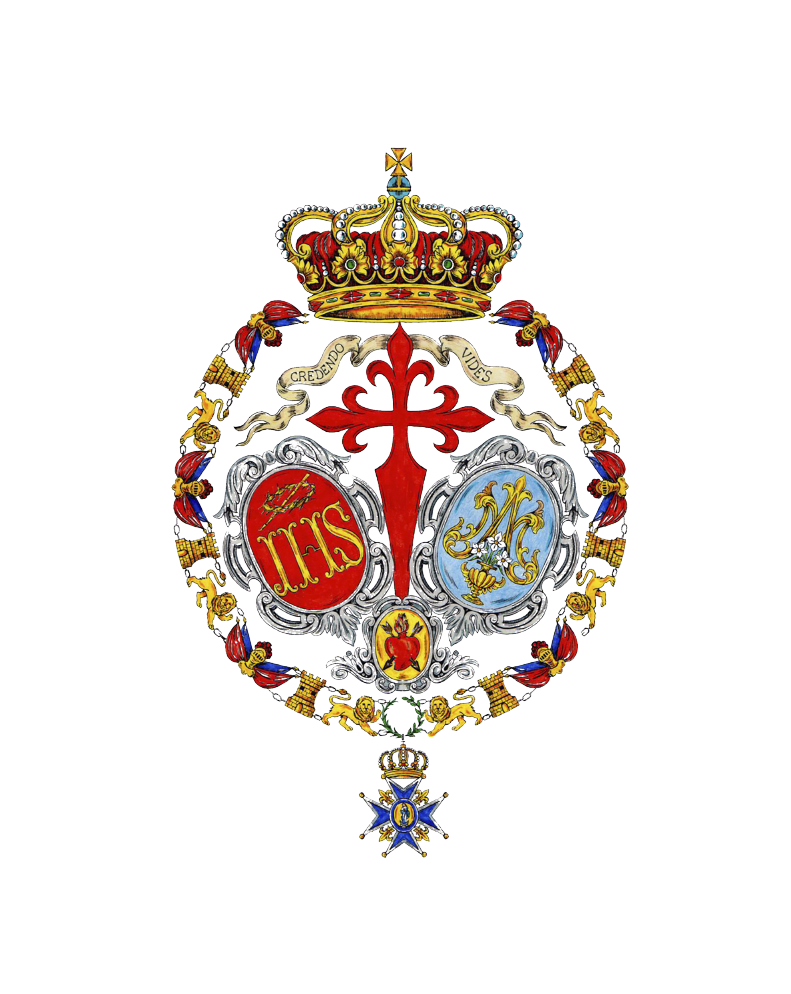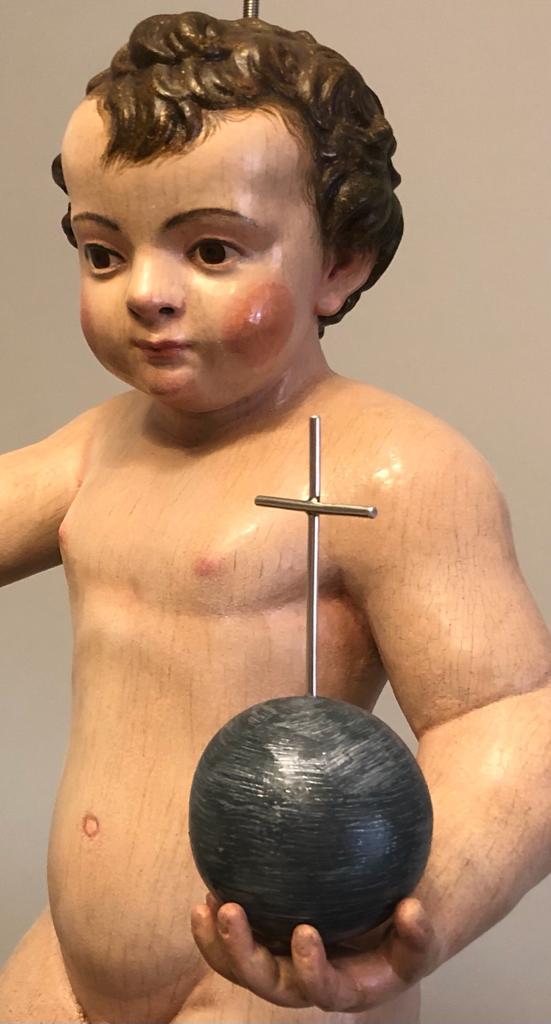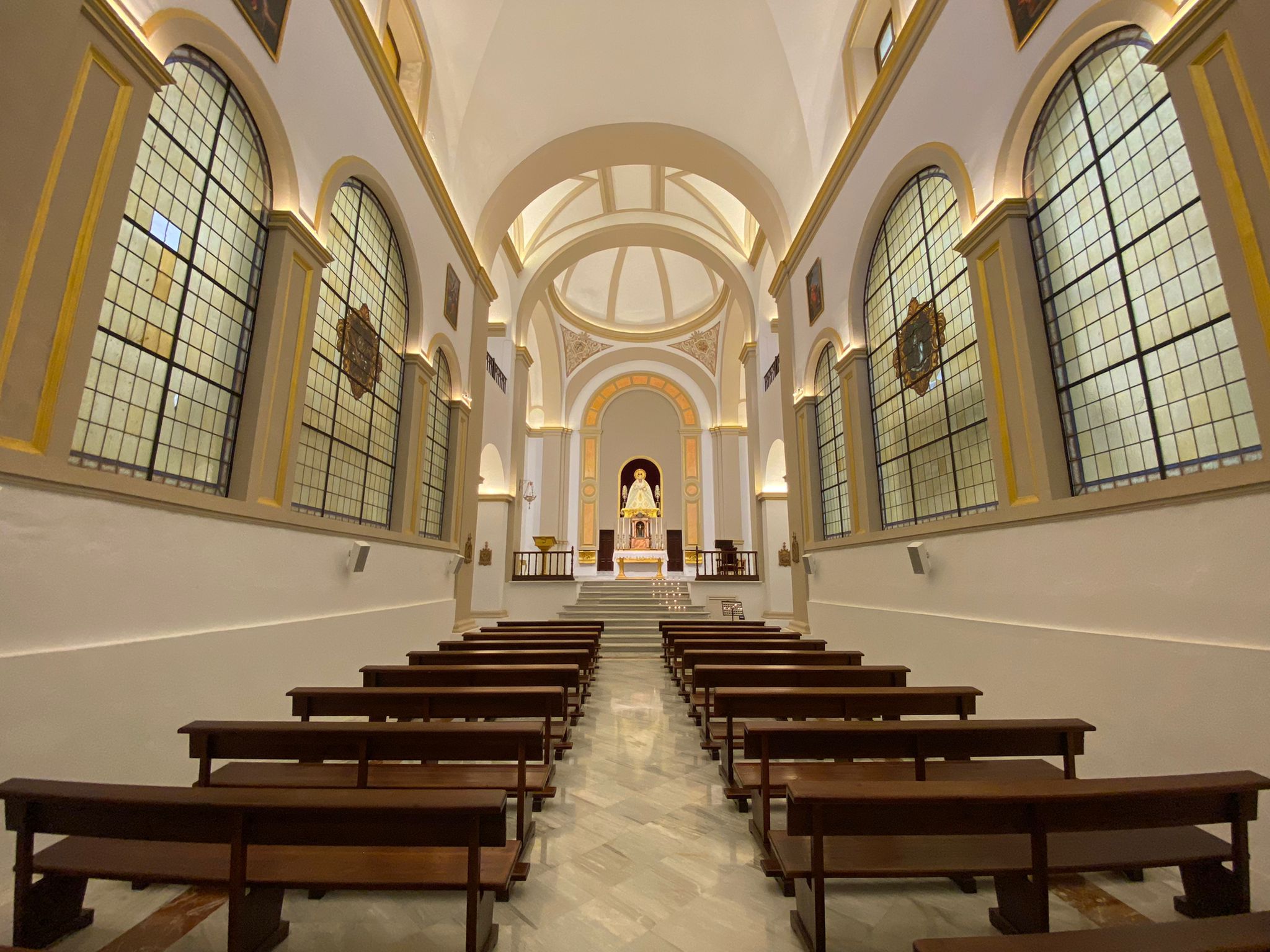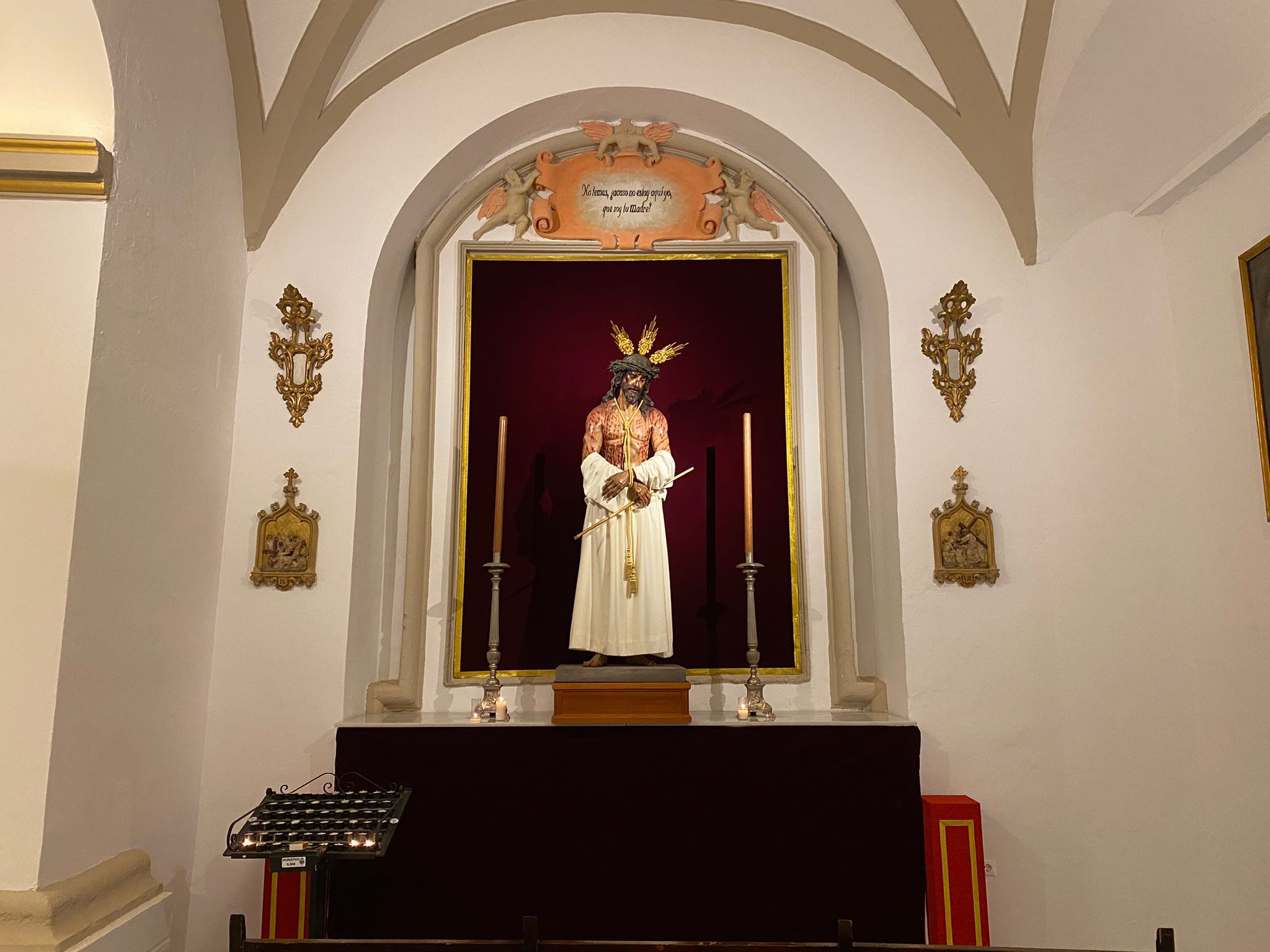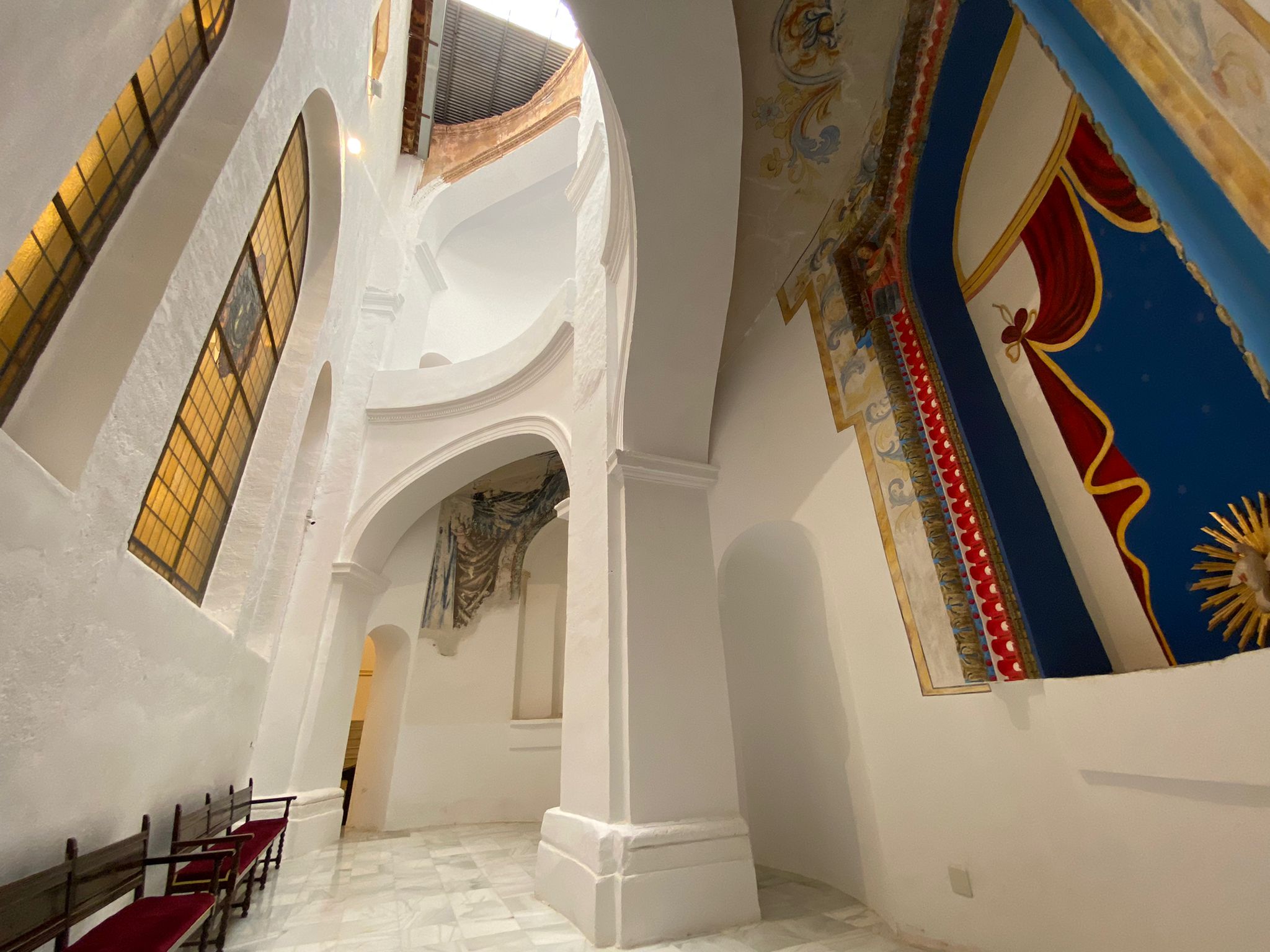Already in this side chapel we continue to find both frescoes and unique baroque plasterwork in each niche. Finding ourselves in the first of it the Child God of divine mercy that from the artistic point of view we are facing a great Renaissance work of the sixteenth century, reaching this chapel after a convulsive history of unfortunate interventions until the Brotherhood acquires it from of a landowning family from a royal city that has had it since the beginning of the last century. This child Jesus Savior of the world also suffers the consequences of the Spanish civil war in Castile where he endures a brutal deterioration being amputated by hands and waist as well as several losses due to being kicked and detached from the window of the farmhouse where he lived.
It is in the year 2021 when the brotherhood of tears entrusts the laborious task of restoration to the graduate in Fine Arts from the University of Granada, Mr. Serafin Hidalgo, who, applying techniques of fixation and conservation of the original polychrome, removal of repainting, reintegration of areas of the mutilated support (arms and torso) and chromatic reintegration of the entire work. He has managed to give it its current state and even close the authorship to the great sculptor Don Bernabe de Gaviria, a companion and therefore contemporary to the school of image maker Don Pablo de Rojas.
The festivity of the Child Jesus is celebrated on the day of divine mercy on the second Sunday of Easter where the infants of the Brotherhood move him in a children’s procession from our parish in Santiago to this Church of Santa Maria de las Lágrimas to celebrate the Eucharist typical of this festivity that had its origin in the apparitions of Jesus received by Saint Faustina of Kowalska at the beginning of the 20th century in Poland.
In the next chapel, it is not by chance that we find Santa Cecilia Patron Saint of music, since this space has been the cradle of a large part of the musical tradition of the city. Highlighting the foundation by the admirable priest Don Carlos Ros Gonzalez, of the ScholaCantorum choir with the seminarians to solemnize the celebrations that would be the seed of the Children’s Choirs of the SARI Cathedral of Guadix and later and great choirs such as Accicorus, Accida, Old Choirs “Carlos Ros”, a long list of musicians who keep alive the great musical tradition that this city treasures.
This building hosts the week framed in the November 22 festivity of Santa Cecilia with various contests, performances and concerts in the musical field. We could not understand our penitential season every Thursday of Holy Week without the accompaniment of our musical bands, in the canopy of María Santísima de las Lágrimas and the Drums and Bugles in the mystery of the Sovereign Power interpreting marches called cofrades in some cases own or dedicated to the brotherhood of Tears such as the following that we highlight: For the Virgin, Queen of Tears of Don Martin Salas, or Anniversary Tears of Accitano Don Eduardo Ramirez, both dedicated in 2005 on the occasion of the 50th anniversary of the founding of the Brotherhood and for the Lord of Ecce Homo, Tears of Sovereign of Don Jose María Sanchez Martin, on the occasion of the blessing of the Image of the Lord of Sovereign Power in 2009.
Once we are ready to leave this side chapel to finish this guided tour in which we will meet great personalities linked to this Church, we invite you to look towards the choir of the temple and contemplate the wonderful organ that, despite being contemporary, solemnizes its own acts with a sonority comparable to the great European cathedrals. The construction of this musical element was directed and the work of the great Accitano musician Rafael Pascual Hernandez Muñoz, with a digital operation through the Haupt-werd program and a new computer system that added both decorative and functional elements that at some point were part from different organs of the world such as Spain, the United Kingdom, Canada and the United States makes us in a unique organ recreation worldwide.
